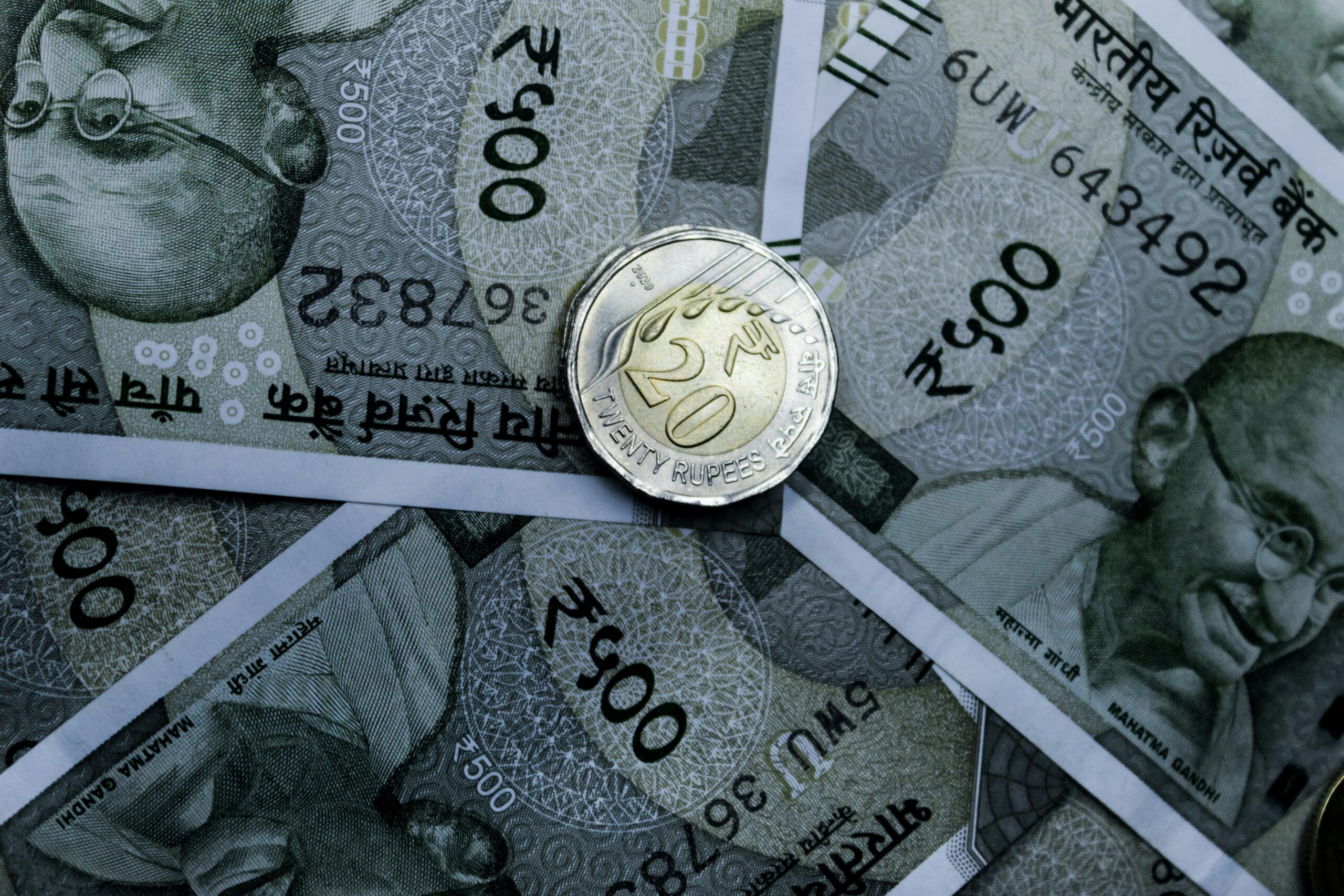Are you looking to unravel the mysteries of the State Bank of India IFSC code? You’re not alone! The Indian Financial System Code (IFSC) is crucial for seamless online banking transactions, and understanding it can make your banking experience much smoother. Every bank branch has a unique IFSC code, which is essential for electronic fund transfers like NEFT, RTGS, and IMPS. But have you ever wondered how to find the SBI IFSC code for your specific branch? Or what each part of the code signifies? This information is not just for tech-savvy individuals; it’s vital for anyone who wants to send or receive money securely. In this post, we will explore the significance of the State Bank of India IFSC code, how it works, and where you can easily locate it. We’ll also address common queries and pitfalls related to SBI’s online banking services. So, if you’re ready to demystify the world of banking codes and elevate your financial transactions, keep reading! You might just discover some surprising insights that could enhance your banking experience today!
Understanding SBI IFSC Codes: Your Ultimate Guide to Seamless Banking Transactions
When you’re dealing with bank transactions, knowing the State Bank of India IFSC code is like having a map in a jungle. I mean, who doesn’t want to get lost when transferring money, right? So, let’s dive into this oh-so-exciting world of IFSC codes.
First off, what even is this IFSC code? Well, it stands for Indian Financial System Code, and it’s a unique code that helps in electronic fund transfers. You know, the kind of stuff that makes life easier but also makes you scratch your head sometimes. Not really sure why this matters, but let’s just say without it, your money might just float into the abyss of the banking system.
Here’s a little breakdown of what the State Bank of India IFSC code looks like. It typically has 11 characters — the first four are always “SBIN” for State Bank of India, and the last part is a unique branch identifier. So, it’s like your branch’s fingerprint. Kind of cool, right?
| IFSC Code Structure | Description |
|---|---|
| SBINXXXXXXX | SBIN is the bank code |
| XXXXXXXXX | Unique branch code |
Now, let’s talk about how to find this elusive code. Maybe it’s just me, but I feel like they hide it on purpose. You can find the State Bank of India IFSC code on the bank’s website, on your bank statement, or even via customer service. Just like a treasure hunt, but without the X marking the spot. Or, ya know, just Google it.
How to Use IFSC Codes
Using the State Bank of India IFSC code is not rocket science, thankfully. When you are transferring funds, there’ll be a section asking for the IFSC code, and that’s where you input it. Simple, right? But, let’s be real here, sometimes you might double-check it like five times because, heaven forbid, you send money to the wrong place.
And if you’re the type who likes to keep things organized (or just super paranoid about getting it wrong), here’s a neat little list of things you need to double-check before hitting that “send” button:
- IFSC Code: Make sure it’s the right one.
- Account Number: This is kinda important too, you know?
- Name of the Beneficiary: Just to make sure you’re not sending money to your ex or something.
- Amount: Always good to know how much you’re parting with.
Common Mistakes with IFSC Codes
Let’s be honest, we all make mistakes. I mean, who hasn’t sent a text to the wrong person? The same goes for IFSC codes. Here’s a few common blunders that people tend to make:
- Typing Errors: One wrong character, and your money could be off to Timbuktu.
- Using Old Codes: Banks sometimes change codes, so make sure you’re not living in the past.
- Ignoring Instructions: Like, if the form says “Account Number,” don’t write “My Money.” Trust me, it won’t work.
Why IFSC Codes Matter
So, why should you even care about the State Bank of India IFSC code? Well, in the digital age, speed is everything. Without this code, your transactions could take a lot longer. I mean, who has time to wait around for money to get where it needs to go? Plus, using the right IFSC code ensures that the funds land safely in the right account. It’s like the bouncer at the club making sure only the right people get in.
And let’s not forget about online payments. If you’re running a business or just selling stuff online, you’d want to make sure the money gets to you, right? This is where the State Bank of India IFSC code comes into play, making sure everything runs smoother than a buttered slide.
Quick Tips for Remembering IFSC Codes
Here’s some tips that might help if you have a terrible memory (like me):
- Make a Note: Jot it down somewhere handy, but not so handy that you lose it.
- Save it on Your Phone: Because who doesn’t have their phone glued to their hand?
- Use Mnemonics: Create something silly that’ll stick in your head. Like, “Silly Bunnies In Need” for SBIN.
So, there you have it! The world of State Bank of India IFSC codes isn’t that scary after all, huh? Just remember to double-check everything, don’t send money to your ex, and you’ll be just fine. Now go forth and transfer those funds
How to Effortlessly Locate Your State Bank of India IFSC Code in 3 Simple Steps
So, let’s talk about the State Bank of India IFSC code, which, if you’re like me, you might be wondering, what the heck is that? I mean, seriously, why do we even need it? But, hey, it’s important for online banking and all that jazz. So, buckle up, ‘cause we’re diving into the nitty-gritty of it all.
First off, the State Bank of India IFSC code is like a special code that helps in identifying the bank branches during electronic fund transfers. It stands for Indian Financial System Code, and it’s kinda like your branch’s fingerprint, unique to each one. Not really sure why this matters, but if you’re making money moves, you gonna need this code, right?
Now, the format of this code is pretty simple, or at least it should be. It usually consists of 11 characters. The first four are always letters, signifying the bank’s name, and then the fifth character is a zero (yes, a big fat zero), and the last six characters represent the branch code. So, if you’re looking for the State Bank of India IFSC code, you might see something like SBIN0001234. Makes sense? Maybe it’s just me, but I feel like it’s a tad confusing at first glance.
Here’s a quick breakdown of how it works:
| Part of IFSC Code | Description |
|---|---|
| First 4 Characters | Bank Identifier |
| 5th Character | Always ‘0’ |
| Last 6 Characters | Branch Identifier |
Now that we got that out of the way, let’s chat about where you can find your State Bank of India IFSC code. You can look it up on the bank’s official website—because, duh, they have all that info. Or, you could just stroll into your local branch and ask someone. Maybe they’ll even throw in a free pen or something. Who knows?
But, just to keep you in the loop, here’s a list of some common branches and their State Bank of India IFSC codes (don’t hold me to it if I miss one, though):
- Connaught Place: SBIN0000123
- Bangalore Koramangala: SBIN0000456
- Mumbai Bandra: SBIN0000789
You see? Easy peasy. But let’s not get too comfortable. There are a few things you gotta keep in mind when dealing with these codes. For instance, if you mix ’em up, your money might just vanish into thin air. Not really the kind of magic show anyone wants to be a part of, right?
Now, if you’re wondering how to use this code, it’s pretty straightforward. Just enter it when you’re sending money online. It’s like typing a secret password, but not really, because it’s not a secret if everyone can see it. You know what I mean?
Another thing, if you ever decide to switch banks or branches, don’t forget to update your State Bank of India IFSC code. You don’t wanna be that person who’s still using an old code. It’s like wearing last year’s fashion—totally outdated.
And, oh, let’s not forget about the importance of accuracy. Just imagine typing in the wrong IFSC code. You could end up sending your hard-earned money to some random branch instead of your friend’s account. Yikes! That would be a disaster. So, double-check that code before you hit send. Better safe than sorry, right?
If you’re curious about some common mistakes folks make with the State Bank of India IFSC code, here’s a short list for ya:
- Typing Errors: It’s super easy to mistype a letter or number.
- Using Old Codes: Branches sometimes change codes, so keep it fresh.
- Not Confirming: Always, I mean always confirm the code with the recipient.
Let’s face it, we all have those moments where we think we know it all, but then, bam! Reality hits us. If you’re ever in doubt, just reach out to your bank. They’re there to help, or at least they should be.
In summary, while the State Bank of India IFSC code might seem like a small detail, it holds a pretty big significance in the world of banking. So, next time you need to transfer money, remember this little code and how it can make or break your transaction. And hey, if all else fails, just blame it on the internet, right?
The Importance of SBI IFSC Codes: Unlocking Faster and Safer Money Transfers
So, let’s dive into the world of the State Bank of India IFSC Code. If you’re scratching your head and saying, “What the heck is that?” don’t worry, you’re not alone. It’s a bit of a mouthful, but it means the Indian Financial System Code, which is like a secret handshake for banks. You need it if you wanna transfer money, pay bills, or do anything that involves, y’know, moving your hard-earned cash around. Not really sure why this matters, but hey, let’s unpack this.
First off, the State Bank of India IFSC Code is a unique code that identifies each branch of the bank. Kinda like a social security number, but for banks. It’s got eleven characters, usually a mix of letters and numbers, which means it’s super easy to remember—said no one ever. Here’s how it breaks down:
- The first four characters are alphabets which represent the bank, i.e., SBI for State Bank of India.
- The fifth character is always a ‘0’ (zero). Why? Who knows, just is.
- The last six characters represent the specific branch of the bank.
So, if you were looking for the IFSC code for the Connaught Place branch in New Delhi, it might look something like this: SBIN0001234. But numbers may vary, of course, based on your branch.
Here’s a handy-dandy table of some popular State Bank of India IFSC Codes. You know, just in case you need them, or if you’re collecting them like Pokémon cards—no judgment here!
| Branch Name | IFSC Code |
|---|---|
| Connaught Place | SBIN0001234 |
| Bandra | SBIN0005678 |
| Jayanagar | SBIN0009101 |
| BTM Layout | SBIN0001122 |
| Koramangala | SBIN0003344 |
Now, if you ever find yourself needing to send money to someone, you gotta have this code. It’s like a GPS for your money. You don’t wanna send it to the wrong place, right? I mean, maybe some people do, but I don’t think that’s the goal. You can find the State Bank of India IFSC Code on the bank’s official website, or sometimes on your bank statement.
But here’s the kicker: not every branch has the same IFSC code. Oh no, that would be too easy. So, if you’re transferring money, make sure you double-check. Because if you send your cash to the wrong branch, good luck getting it back. It’s like trying to find a needle in a haystack that’s also on fire—not exactly a walk in the park.
You might be asking yourself, “Can I just use any code?” And the answer is, well, kinda. If you wanna send money through NEFT (National Electronic Funds Transfer), RTGS (Real-Time Gross Settlement), or IMPS (Immediate Payment Service), you need the correct State Bank of India IFSC Code. Otherwise, you’re gonna have a bad time.
Now, let’s talk about where you can find this magical code. It’s not hiding under a rock, so don’t go looking there. You can find it on the State Bank of India’s official website, in the branch information section. Or just pick up the phone and call them, if you’re into that whole “talking to a human” thing.
Here’s a quick list of ways to find your State Bank of India IFSC Code:
- Visit the official SBI website.
- Check your bank statement.
- Ask your friend who works at the bank (because they know everything, right?).
- Use mobile banking app; they often have it listed.
- Google it—because that’s what we do now, isn’t it?
And if you’re still confused, just remember this: without the IFSC code, your money is kinda like a lost puppy. It’s out there somewhere, but good luck finding it.
In case you’re thinking of using online transfer services, most of them will ask for this code. So, if you don’t have it, you might as well be trying to bake a cake without flour. It’s just not gonna work out.
So, there you have it! Your crash course on the State Bank of India IFSC Code. It’s crucial, it’s unique, and it’s definitely something you don’t wanna overlook. Keep it handy, and maybe even memorize it—if you’re feeling adventurous.
Top 5 Benefits of Using State Bank of India IFSC Codes for Online Banking
Alright, so let’s dive into the world of the State Bank of India IFSC code. If you’re scratching your head wondering what the heck an IFSC code is, don’t worry — you’re not alone. Many people are kinda confused about it. So, to clear things up, IFSC stands for Indian Financial System Code. It’s like a unique identifier for every branch of the bank, y’know? Helps in electronic fund transfers and all that jazz.
Why is it important? Well, without the right State Bank of India IFSC code, your money might just go on a little vacation to the wrong branch. And nobody wants that, right? Not really sure why this matters, but trust me, it’s a big deal when you’re trying to send or receive money online.
Here’s a quick table that might help you understand it better:
| Branch Name | State | City | IFSC Code |
|---|---|---|---|
| SBI New Delhi | Delhi | New Delhi | SBIN0000001 |
| SBI Mumbai | Maharashtra | Mumbai | SBIN0000002 |
| SBI Kolkata | West Bengal | Kolkata | SBIN0000003 |
| SBI Bangalore | Karnataka | Bangalore | SBIN0000004 |
| SBI Chennai | Tamil Nadu | Chennai | SBIN0000005 |
So, if you looking for the State Bank of India IFSC code for your branch, check it out in this table. Just be careful, okay? One wrong letter or number, and your funds could end up in the Bermuda Triangle of banking. I mean, seriously, who has time for that?
Now, let’s talk about how you can find your State Bank of India IFSC code. There’s a few different ways, and they’re all super simple. First off, you can just go to the official SBI website. They’ve got a nifty little tool where you enter your branch name and boom! The code pops up like magic. Or, maybe it’s just me, but I feel like it’s more like a digital treasure hunt sometimes.
Another way is to check your bank statements. Yup, that little piece of paper or digital document you probably just glance over — it’s actually hiding useful info. The State Bank of India IFSC code is usually printed right there on the top. Cool, right?
You can also ask your bank representative. They’re usually pretty friendly and can help you out. Just remember to ask nicely — you catch more flies with honey, as they say. Or, maybe you could just google “SBI IFSC code” along with your branch location. Who doesn’t love a good ol’ Google search?
But here’s the kicker — not all branches have the same code, duh! Each one is unique. It’s like a fingerprint but for banks. So, if you’re thinking of sending money to your friend who lives in a different city, make sure you’ve got the right State Bank of India IFSC code for their branch.
Now, let’s take a quick look at some commonly used terms that might help you navigate this confusing world of banking:
- NEFT: National Electronic Funds Transfer — a fancy way of saying you can send money electronically.
- RTGS: Real-Time Gross Settlement — for those who wanna send large amounts, like really large.
- IMPS: Immediate Payment Service — when you need to send money ASAP, like when you’re splitting a pizza bill.
Okay, so maybe you’re wondering what would happen if you mess up the State Bank of India IFSC code. Well, best case scenario, the transaction gets rejected. Worst case? Your money goes to the wrong place, and then you gotta chase it like a dog chasing its tail. Good luck with that!
Here’s a little checklist for ya to make sure you don’t mess things up:
- Double-check the State Bank of India IFSC code before hitting send.
- Make sure you’re using the right branch code.
- If you’re using online banking, look for the confirmation page that shows the details before you finalize.
And just to throw in some random trivia, did you know that SBI is one of the oldest banks in India? Founded way back in 1806 as the Bank of Calcutta, it has come a long way. So, when you’re using the State Bank of India IFSC code, you’re not just dealing with any bank — you’re dealing with a piece of history.
So there we go! The next time you need to send money, you’ll know the importance of the State Bank of India IFSC code. And who knows? You might impress your friends with all
Common Mistakes to Avoid When Using SBI IFSC Codes for Fund Transfers
State Bank of India IFSC Code: What You Need to Know
So, if you’ve ever tried to send or receive money, you’ve probably heard the term state bank of india ifsc code thrown around. Like, what even is that? I mean, it’s just a bunch of letters and numbers, right? But trust me, it matters! Kinda. Not really sure why this matters, but if you’re dealing with online transactions, you better pay attention.
First off, IFSC stands for Indian Financial System Code. Yup, sounds fancy, huh? This code is essential for electronic fund transfers. It helps to identify the bank and the specific branch that you’re dealing with. Just imagine sending your hard-earned cash to the wrong branch. That would be a nightmare! So, knowing your state bank of india ifsc code is like having the GPS for your money.
Here’s a little breakdown of how it works. The IFSC code consists of 11 characters. The first four characters represent the bank code, the fifth one is always a zero (yeah, don’t ask why), and the last six characters are for the branch code. So, if you’re looking at your state bank of india ifsc code, it’ll look something like this: SBIN0001234. Pretty straightforward, right?
Now, let’s be real. You might be thinking, “Do I really need to know all this?” Maybe it’s just me, but I feel like it’s important to have a grasp on this stuff, especially if you’re planning to send money online. So, how do you find your state bank of india ifsc code?
Well, there are a few ways to do it. You can check the official State Bank of India website. They have a nifty little tool that’ll help you find your branch IFSC code. Just type in your branch or location, and boom! There it is. Or, you could also do the old-fashioned way—ask your bank. Shocking, I know!
Let’s take a look at some examples of state bank of india ifsc codes. Here’s a mini table of some popular branches:
| Branch Name | IFSC Code |
|---|---|
| Connaught Place | SBIN0001234 |
| Mumbai Main Branch | SBIN0004321 |
| Bangalore Branch | SBIN0005678 |
So, if you’re in Connaught Place and need to transfer funds, you’ll be using SBIN0001234. Easy peasy, right? But hey, don’t forget to double-check! One little typo, and your money could end up who-knows-where.
Now, what about when you’re trying to figure out how to use the state bank of india ifsc code? Basically, when you’re making an online transfer, you’ll need to fill in a form. It usually asks for the recipient’s bank name, account number, and, of course, the IFSC code. If you leave it out, good luck getting your money where it needs to go!
Also, fun fact: The state bank of india ifsc code is used for a bunch of different types of transactions, like NEFT, RTGS, and IMPS. Not really sure what those are? No worries! Here’s a quick rundown:
- NEFT (National Electronic Funds Transfer): This is a method for transferring money in batches. It’s not real-time, but it’s safe and efficient.
- RTGS (Real-Time Gross Settlement): This one’s for large transactions. It’s processed in real-time, which means your money goes through immediately.
- IMPS (Immediate Payment Service): This is like the superhero of fund transfers. It’s available 24/7 and super quick.
Here’s a listing of how you might be using the state bank of india ifsc code for these transactions:
- Open your banking app or website.
- Select the type of transfer you want to make: NEFT, RTGS, or IMPS.
- Enter the recipient’s account number.
- Type in the state bank of india ifsc code.
- Confirm the details and hit send.
And there you have it! Just like that, you’re on your way to becoming a fund-transfer expert. Just remember to check those details before you hit send. Because one tiny mistake can lead to a big headache.
And if you’re still confused, don’t worry. You’re not alone in this. Lots of folks have no clue what all these codes mean. But just take a breath, relax, and maybe grab a cup of chai while you figure it out.
Conclusion
In conclusion, the IFSC code of the State Bank of India plays a crucial role in facilitating seamless electronic fund transfers across the country. Throughout this article, we have explored the significance of the IFSC code, its structure, and how it ensures secure banking transactions, particularly for NEFT, RTGS, and IMPS services. Understanding how to locate and utilize the correct IFSC code can save time and prevent errors when transferring funds. Whether you are making personal payments, business transactions, or setting up automated payments, knowing your bank’s IFSC code is essential. We encourage all SBI customers to familiarize themselves with their specific IFSC codes and utilize them effectively for smooth banking experiences. For any further assistance or queries regarding your IFSC code, don’t hesitate to reach out to your local SBI branch or visit the official SBI website for more information.






























































